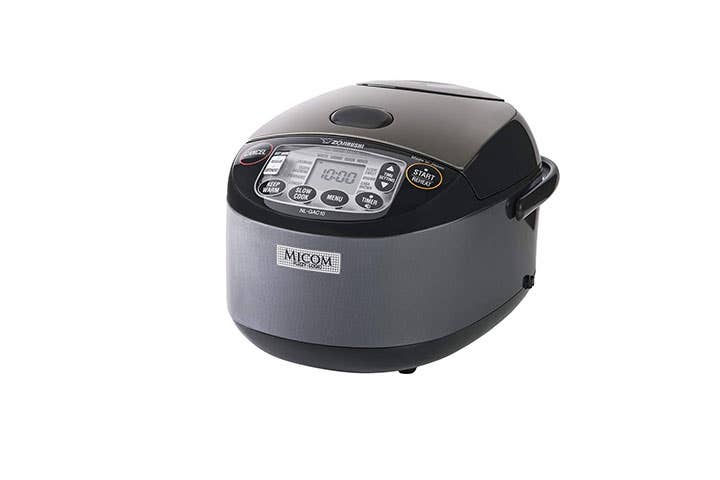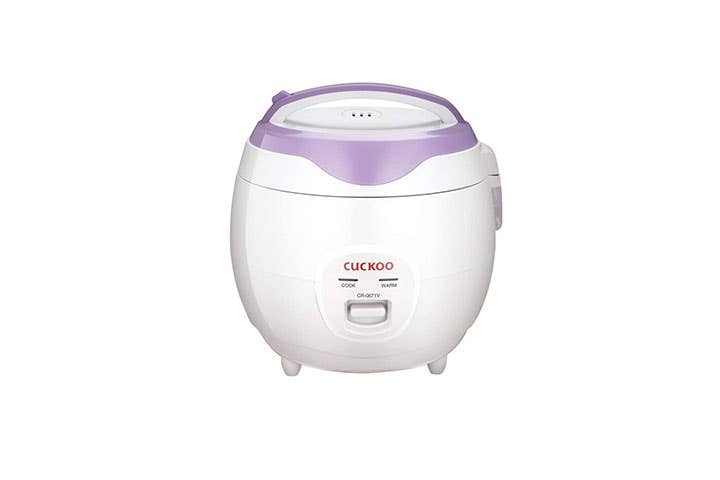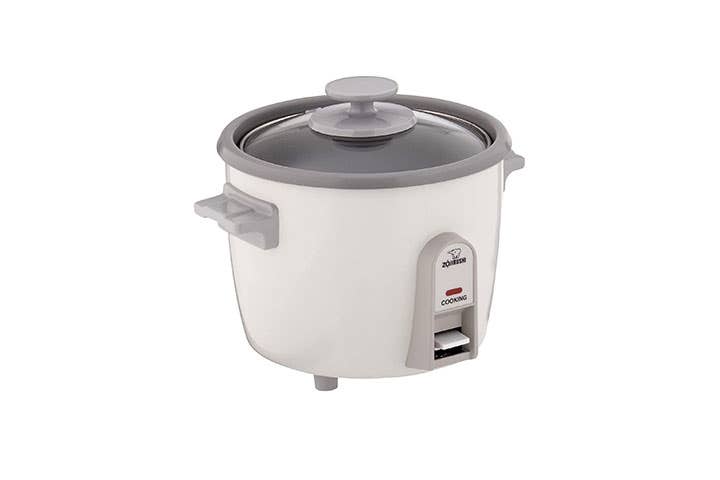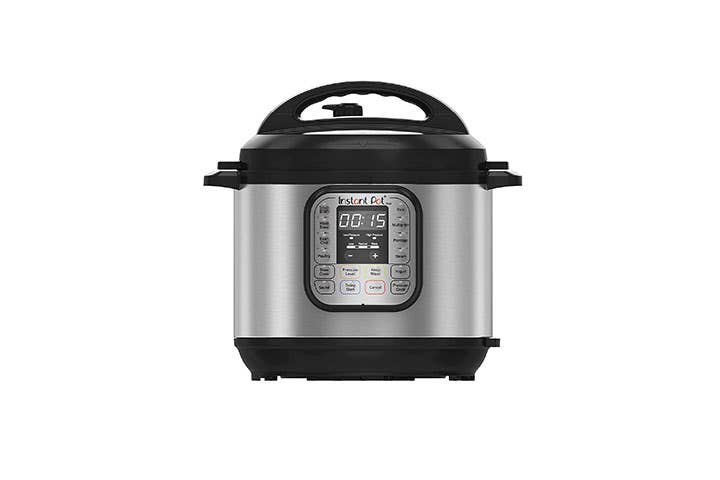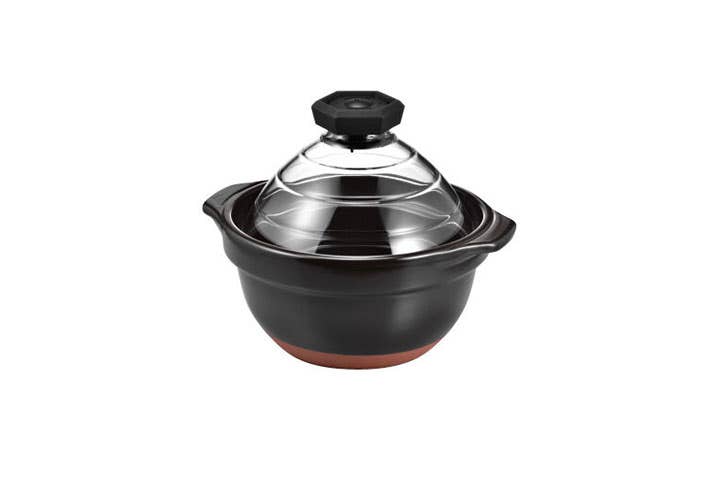The Best Rice Cookers Are Worth the Counter Space
We tried them all, from simple, one-button rice cookers to the fancy models with all the bells and whistles.
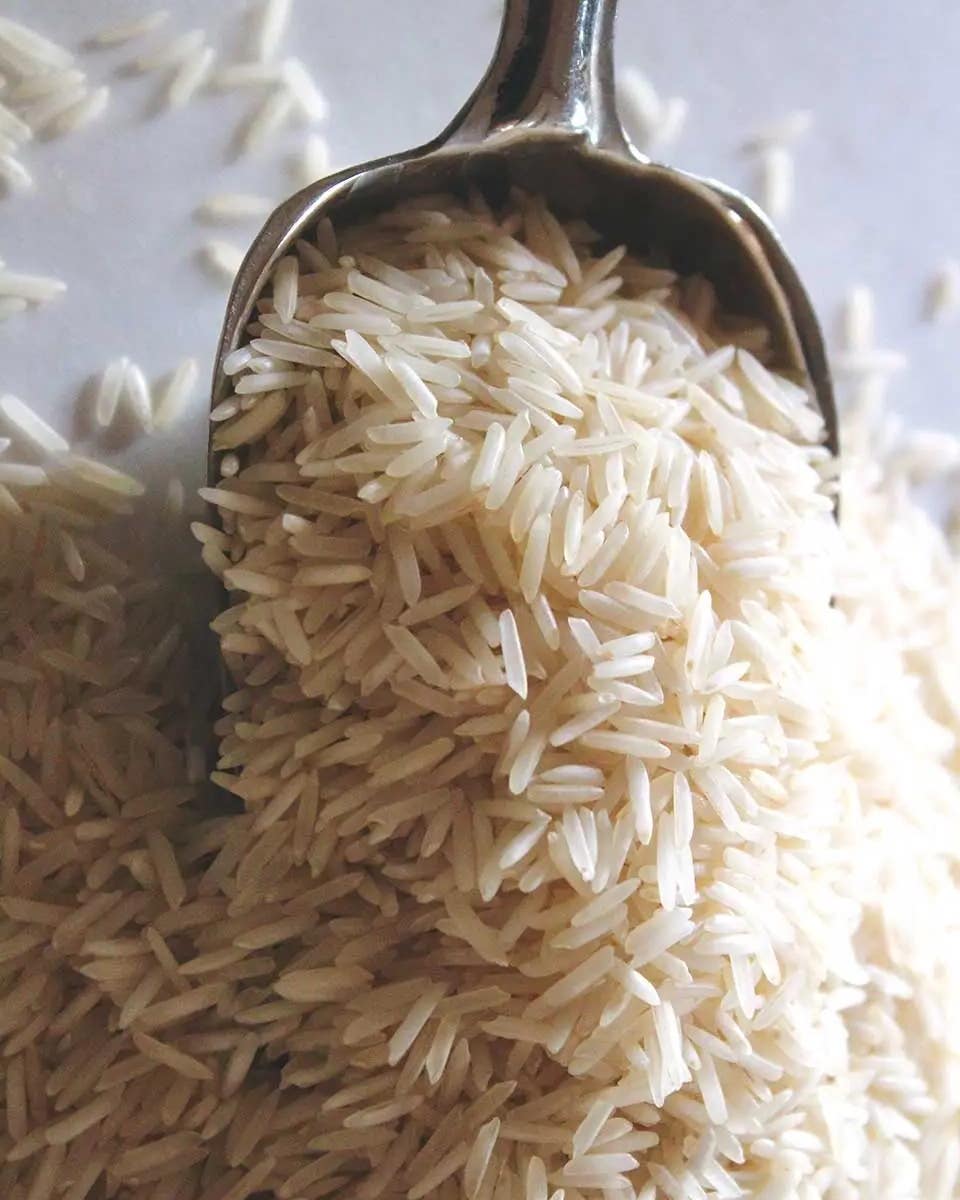
Despite considering rice one of the four essential food groups (along with noodles, dumplings, and bread), I always poo-pooed rice cookers as space-hogging unitaskers. I now regret this. The best rice cookers are not only time-savers, but they’re foolproof rice-making workhorses that take the possibility of scorched rice out of the equation.
Even when I was pregnant and could only stomach rice with butter, I found the traditional stovetop method superior. However, around the time that the aforementioned child could crawl away from me and stick her fingers in electrical sockets and find the dog kibble the second I turned my back, I realized the error of my ways. Suddenly making rice on the stovetop — which I believed then is the best way and still do, when possible — was an impossible task. I mismeasured because I was trying to do three things at once, I missed the timer and it boiled over or turned into soup, or I burnt it to the bottom of the pan just a few too many times. By the time my younger daughter could also move around, I admitted defeat: I needed a rice cooker.
Eric Kim, a staff writer for the New York Times and the author of the upcoming cookbook Korean American: Food That Tastes Like Home, agrees with me on both points: that rice tastes best when properly cooked on the stove and that I needed a rice cooker — he has recipes for both methods in his book. Moreover, he points out that he, as a one-person household, also requires a rice cooker. "I love the opportunity to make rice on the stovetop," he says. "But the reason I have a rice cooker is for convenience."
When he first moved to New York, his mom got him a fancy rice cooker at HMart that he used for a decade. But after a user-error mishap, when he went to buy his own, he just bought a cheap, small one, because it still makes good rice in a convenient way. Chef Tiffany Ran, who runs a Taiwanese pop-up called Ba Ba Lio in Seattle, on the other hand, finds herself drawn to the rice cookers that offer more bells and whistles, like settings for different grains and her own custom rice blends. You can use other cookers for the same purpose, she acknowledges, but you have to learn it by feel.
"I like rice cookers that are dummy proof," says Ran, summing up my motivations (it's me, I'm the dummy). "I want to press a button, and check on it later, one that doesn't dry out the rice, since sometimes you forget about it. Those are the best."
The difference between Ran's and Kim's ideas on rice cookers highlights the various reasons one might choose one model over another Though Kim freely admits that the quality of rice cooker generally goes up with how much you spend, he doesn't necessarily feel that it does so in a way that matters for everyday rice cooking. "The point isn't that it makes good rice, it's a simple machine, it's convenience." He turns down people who want to know what brand or model he uses, saying they should just get what they want.
And he's right: nearly all the low-end models by the standard kitchen appliance brands run under about $50 and will do a good job cooking no-frills rice conveniently. But for folks like Ran, me, and many others, looking to spend a little bit more and get a few more features, we wanted to dig deep to find the best rice cookers and what makes each one great.
Our Top Picks
- Best Overall: Zojirushi NL-GAC10
- Best Value: Cuckoo CR-0671
- Best Small: Zojirushi NHS-06
- Best Multi-Purpose: Instant Pot Duo
- Best Aesthetics: Hario Japanese Rice Cooker
Best Overall: Zojirushi NL-GAC10
Best Overall
Capacity: 5.5 cups | Price: $273.99 | Display: Digital
Pros
- Cooked the best rice in testing
- Extensive modes and customizations
- Instant and extended warm functions
Cons
- Price
- Size
Why we chose it: Simply put, this model made the best rice.
Zojirushi showed off how it earned its reputation for the best rice cookers in our testing, turning out near-perfect rice in a range of styles at varying price points, but this model stood out to tasters as making the best rice. While you pay for that quality, the machine earns its price in other ways, with more than a dozen different modes for making jasmine, brown, sweet, and mixed rice, as well as "umami" mode, which soaks and steams the rice longer, supposedly making the rice taste even better, a congee button for porridge, "quick" options, plus steam and slow cook functions.
It also had tons of little features that made it a delight to use: it plays a song as it starts — though you can choose to change that to a beep or silence it — and it tracks the total time remaining in the cooking process (including steaming time) which is helpful for timing meals and surprisingly rare in the category. It took about 50 minutes to make one cup of rice, which was pretty standard among the cookers, but that time was totally hands off, since it moved automatically into warm mode to complete the steaming. Finally, it did all this without making the operation remotely complicated. Clear measurements on the inside of the bowl and the simple interface made this machine a breeze to use and turned out rice as close to perfect as any machines we tested.
Best Value: Cuckoo CR-0671
Best Value
Capacity: 6 cups | Price: $49.99 | Display: Indication lights
Pros
- Simple to use
- Cute
- Made consistent, good rice
Cons
- Only cook and warm modes
- Large footprint
Why we chose it: Simple, cute, and affordable, this made rice nearly as well as cookers that cost five times as much.
One step up from the simplest ones, this very cute machine does basically a single thing — cook rice — but does it quite well (okay, it does have the indispensable instant warm function, too). The grains were just a smidge stickier than those of our winner, but for everyday purposes, they were excellent, and we found it made rice with a more consistent texture throughout the pot than similar models. The savings do mean forgoing all the fancy modes, but if making good rice is a priority, this model works well — and looks good doing it.
Best Small: Zojirushi NHS-06
Best Small
Capacity: 3 cups | Price: $47.99 | Display: Indicator light
Pros
- Fast
- Simple
- Small
Cons
- No warm function
Why we chose it: This small rice cooker epitomizes simplicity without forgoing quality.
Electric rice cookers tend to be bulky appliances by nature, so this little three-cup model is about as small as they come. But, as Kim notes, bigger is not necessarily better. Certainly, this smaller model was faster than the larger models — though it did require paying enough attention to notice when it flipped off and then timing the 15 minutes of steaming — and it turned out lovely textured rice with shiny individual grains. Without the instant warm function (or any warm function) it just needs a little extra babysitting. Still, there is something delightful about how well it cooks rice and how simple the machine is — just a single lever, and an indicator light while it cooks.
Best Multi-Purpose: Instant Pot Duo
Best Multi-Purpose
Capacity: 5 cups | Price: $89 | Display: Digital
Pros
- Fast
- Easy to use
- Multitasker
Cons
- Large
- Inconsistent rice
Why we chose it: For anyone who only makes rice occasionally, the Instant Pot offers a more versatile automatic option that rivals rice cookers.
The Instant Pot makes surprisingly good rice, even without any further adjustments than hitting the "rice" button. It is definitely a step down from any of the rice cookers, coming out a tad gummier and much less consistent — wetter in some parts than others. Still, it served its purpose and with some adjustment of method and ratio, can be improved. For someone who eats rice only a few times a month and has space constraints, this multicooker helps reduce appliances. The other big advantage of the Instant Pot comes in the speed: start to finish, it took less than 30 minutes, the fastest of the electric rice cookers we chose here takes 50 percent longer.
Best Aesthetics: Hario Japanese Rice Cooker
Best Aesthetics
Capacity: 2.25 | Price: $95 | Display: None
Pros
- Beautiful
- Innovative
- Simple
Cons
- Requires monitoring
- Slow
Why we chose it: This stunning, creative dish mimics the electronic rice cooker experience on the stovetop.
The black ceramic bowl of this rice cooker looks like any other nice piece of pottery, but when combined with the specially designed glass lid, creates a rice cooking system that makes cooking rice on a range almost as simple as using a rice cooker. Or, it at least does well enough that its good looks made up for any lack of functionality. While the test batch of rice wasn't perfect — still a little wet when we pulled it off per the instructions — letting it steam a few extra minutes worked out fine. A few uses are enough for novices to hone the recipe, especially since the included non-English instructions hampered us a bit (though we ultimately found the manual online). The process is slightly more hands-on than an electric cooker (you do have to remove it from the heat yourself, though it whistles to let you know when), but only barely so, and it is far more simple than managing the heat of a standard stovetop process. It does require soaking the rice ahead of time, so even though the cooking time is quick, the total time is closer to that of an electric rice cooker.
Runners Up
Framing is essential in the search for the best rice cooker, because rice cookers are like dogs: all rice cookers are good rice cookers, and the one you own is, by default, the best one. That also means people can have emotional attachments to rice cookers: Ran was excited to have a Tatung, a cult favorite for Taiwan cooks, in our testing. While it has a lot to recommend it — more dishwasher-safe parts, super simple construction, and a reputation for lasting forever — it became clear that it was more Akita than Golden Retriever: it required building a strong relationship over time. The manufacturer instructions yielded middling results, and the storied versatility requires research or practice. We trust millions of Taiwanese grandmothers more than almost anything in the world, but when it comes to advising strangers to shell out $100 or more, we leaned toward the foolproof options.
How We Chose These Products
While the market teems with domestic brands at affordable prices, part of our mission in looking into rice cookers was finding out what spending that additional money would buy us. We researched the favored rice cookers from around the rice-loving world and brought in the top options in a variety of price levels, sizes, and styles.
Chef Tiffany Ran joined us to cook medium-grain white rice exactly per the manufacturer's included instructions and together we took note of how long it took to make the rice, how complicated the process was, and eventually how good the rice was — looking mostly at the resulting texture. Afterward, we noted how complex the cleaning process was for each machine.
Features to Keep in Mind
Size & Dimensions
The size of a rice cooker has two components: the quantity of rice it can make, and its overall physical size. A third element to picking a rice cooker size is the ratio of those. The fancier the rice cooker, the larger the size of the machine relative to the quantity of rice it holds. Our choice for the best small cooker, for example, held additional appeal in its space efficiency.
Most of the rice cookers we tested come in at least two capacities, giving you flexibility on the size as you choose the right style. Kim advises buying a cooker with the capacity that matches the quantity you make most often, keeping in mind that one cup of dry rice makes three cups cooked. If you occasionally need to make more, he points out, you can just do that in a pot. Ran also notes that until you get restaurant-specific versions, the larger rice cookers tend to be less consistent in quality.
The dimensions of a rice cooker is a more straightforward question: it is a small to medium size appliance, and you'll need to store it somewhere. If space is at a premium, look for a multi-use machine (like the Instant Pot) or at our small pick — which does come in a slightly larger size that is equally space-efficient.
Presets & Modes
Kim favors the super simple, one-button machines like our small pick. "The reason I have a rice cooker is for convenience," he explains. "One button, one lever, and a glass lid. Nothing fancy." However, one of Ran's favorite things about rice cookers is the versatility — that they can be used for making whole meals by steaming meat and vegetables over rice, or easily making congee without having to keep stirring.
The simplest machines don't even have a display, just the button that pops up when the rice is finished cooking. As prices go up, features expand into a simple light display, or onto a digital screen with lots of buttons for different presets.. Our top overall pick, for example, has more than a dozen modes, depending on what type of rice, how you plan to cook it, and even has options for non-rice cooking.
But when it comes to rice cooker modes, the most important thing to think about is how you plan to use cooker. For Kim, it's just for convenient rice, so simple works well. If you plan to use yours for congee, brown rice, and slow-cooking, look for models with those features.
Cleaning & Maintenance
The fancier your rice cooker, the more work it takes to clean. All those bells and whistles include moving parts. One of the things Kim mentioned liking about the super-simple budget options in a similar style to our small pick is the ease of cleaning. There are no rubber seals or vents, no disassembly of the lid involved.
Each rice cooker comes with specific notes on cleaning, including whether the main insert is dishwasher safe, but the nice thing about even most mid-range versions is that wiping the inside with a damp cloth is more than enough to keep it clean between regular uses.
Additional Features
Even most budget rice cookers come with the essentials: a measuring cup and a rice paddle. A nice-to-have feature is a notch on the side of the cooker that holds the paddle. You can store it inside, but this makes it easier between fluffing and serving, and keeping it handy to get out more rice. A non-stick coating is nice from an ease of use (and cleaning) standpoint, but the higher-end rice cookers already have enough fail-safes that it's unlikely you'll end up with rice sticking to it. And if you do scorch the rice to the insert, Kim says one of his favorite dishes is a Korean burnt rice tea that you can make from it.
Ran recommends looking for a cooker with an "instant warm" function, that automatically changes to a warming mode when the cooking is done, and keeps the rice fresh for hours (and sometimes even days) without drying it out.
Ask the Experts
Q: What else can I make with a rice cooker?
People fill whole cookbooks with the possibilities for making things in rice cookers, but Ran has her eye on a few specific things to experiment with, including chiffon-style cakes. "I've heard about people using it to make bread and yogurt," she says, though she has so far stuck to steaming buns and baos. "And I know you can make black garlic in it, but I don't recommend using it for rice afterwards," she adds.
Q: Should I preheat my rice cooker before cooking?
While the whole point of the rice cooker is that it doesn't need preheating, Kim is an ardent fan of pre-soaking the rice. "Part of what cooks rice is the steam," he explains, so the pre-soak changes how the steam works — even five minutes helps. Ran finds soaking particularly important with larger quantities of rice.
Q: How long does a rice cooker last?
"If a mom can pass it down to her daughter," Ran thinks out loud, "a few decades?" Kim says he had his last one for about ten years before a user error — he put in soaked rice without the insert — inspired him to get a new one.
Q: Can I wash my rice cooker in the dishwasher?
Each rice cooker has its own cooking instructions, and while some of the inner bowls can go in the dishwasher, there is not a hard and fast rule. It goes without saying, however, that you should never put anything with electronic components in the dishwasher.
Our Take
Finding the right rice cooker requires looking specifically at your household and your habits around rice. Spending more money generally results in better rice, but if the big fancy rice cooker can't fit — physically or mentally — in your kitchen space, the smaller and cheaper ones still do a fantastic job of making rice neatly and efficiently. All of the cookers we listed here made excellent rice, so the best rice cooker is the one that makes you happy — in how much it costs, the size, and the features.
Keep Reading
Continue to Next Story
